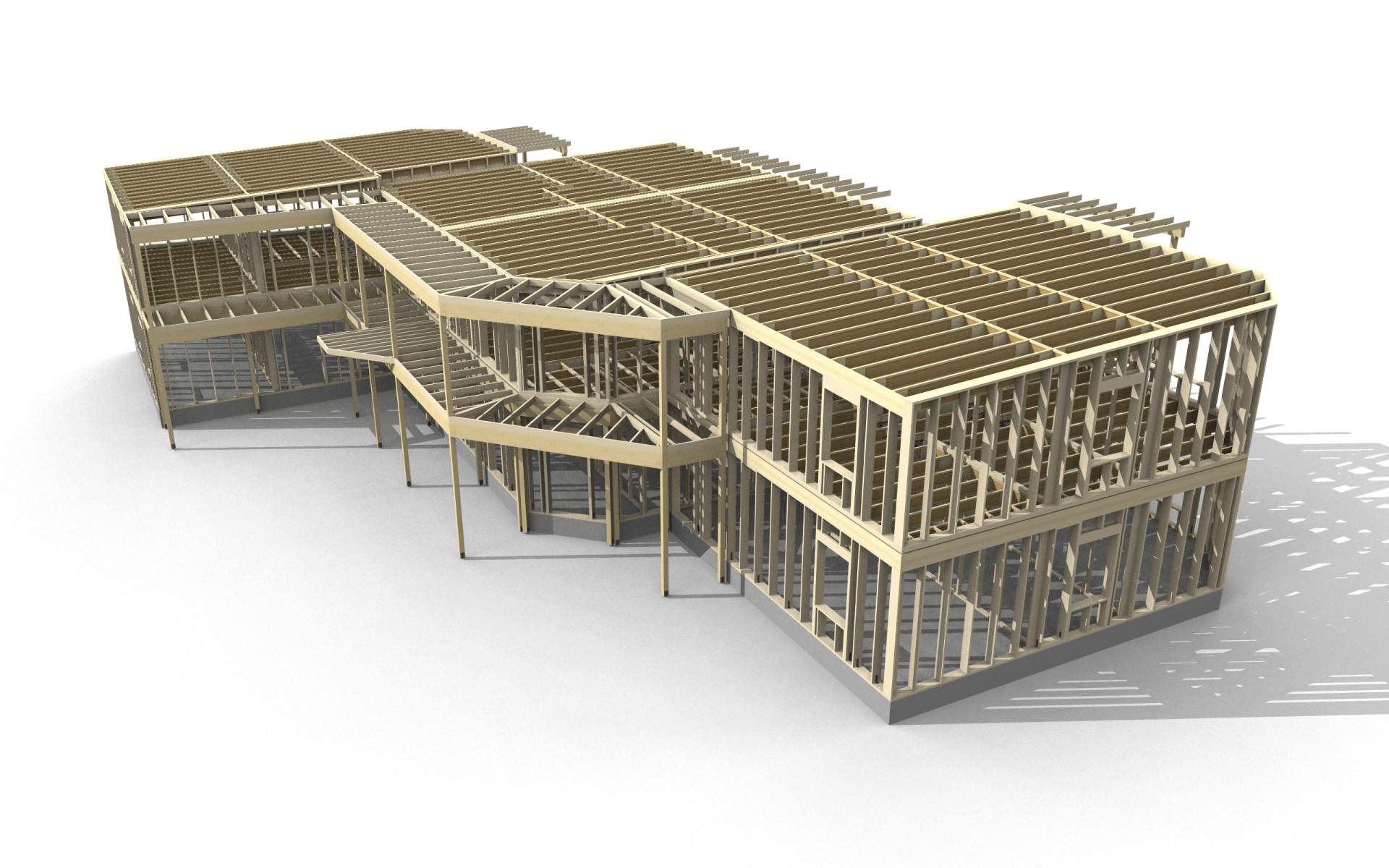Future Trends in Wood Framing Software: What to Expect in the Coming Years
Wood framing software has transformed construction by streamlining processes, enhancing precision, reducing errors, and boosting efficiency for architects, engineers, and builders. With advancing technology and sustainable building practices, we anticipate seven future trends in this software.
Wood framing software has revolutionized the construction industry, enabling architects, engineers, and builders to streamline their processes, enhance precision, reduce errors and improve overall efficiency. As technology, as well as sustainable building practices continues to advance, there are several future trends that we can expect to see in wood framing software. In this article we will cover seven of these future trends.
Integration with Building Information Modeling
Vertex BD is a BIM Software for wood framing. Building Information Modeling (BIM) is a digital representation of a building’s physical and functional characteristics. It allows architects, engineers, and builders to collaborate on a project from start to finish. In the coming years, we can expect wood framing software to integrate more seamlessly with other BIM tools. This will enable users to generate accurate 3D models of their designs and easily transfer data between different software applications.
Increased Automation
Automation is already transforming many industries, including construction. In the future, we can expect wood framing software to become even more automated. Vertex BD already reduces human error and increases efficiency by automating repetitive tasks such as generating cut lists or calculating material quantities.
We can also expect to see integration of robotics into wood framing processes. Robotic systems can assist with tasks such as cutting, shaping, and assembling wooden components with unparalleled precision and speed. Automated systems can also be utilized for on-site assembly, reducing the need for manual labor and enhancing overall productivity.
Automation in wood framing software also facilitates data collection and analysis, leading to data-driven decision making. Automated systems can capture and analyze data on material usage, production rates, and quality metrics. This data can provide valuable insights for process optimization and resource allocation that leads to continuous improvement in off-site construction practices in future.
Improved Sustainability Features
Sustainability is becoming increasingly important in the construction industry as more people look for environmentally friendly building practices. Wood framing software will play a crucial role in this shift towards sustainability by incorporating features such as energy-efficient designs or using sustainably sourced materials.
Integration of Artificial Intelligence
Artificial intelligence is poised to play a significant role in the future of wood framing software. AI algorithms can analyze vast amounts of data and make intelligent recommendations, leading to optimized designs and efficient material utilization. AI-powered software can automatically generate framing layouts, identify potential structural issues, and suggest modifications, saving valuable time and resources.

Enhanced Collaboration Tools
Cloud-based platforms have already transformed the way teams collaborate, and this trend will continue in the realm of wood framing software. Cloud-based solutions allow multiple stakeholders to access and collaborate on the same project in real-time, irrespective of their physical location. This facilitates seamless communication, reduces errors, and enhances overall project coordination. Furthermore, cloud storage enables the centralized storage and sharing of project data, ensuring easy access to up-to-date information.
Collaboration is key in any construction project involving multiple stakeholders such as architects, engineers, contractors, and subcontractors. Future wood framing software will include enhanced collaboration tools that allow teams to work together seamlessly regardless of their location or time zone.
Virtual and Augmented Reality for Visualization
Virtual and augmented reality technologies offer immersive experiences that can revolutionize the way architects and builders visualize and plan wood framing projects. VR/AR can enable users to walk through virtual structures, making real-time modifications and assessing design feasibility. This technology allows for better communication, collaboration, and error detection, leading to more accurate and efficient construction processes.
In the future, we can expect wood framing software to incorporate AR technology into its features allowing users to visualize their designs in real-time. Technology has already been adopted by some companies within the construction industry for tasks such as visualizing designs or conducting site inspections remotely.
Generative Design
Generative design is an innovative approach that uses algorithms to explore a range of design possibilities based on specific parameters and constraints. In the realm of wood framing software, generative design can automatically generate optimal framing layouts and structural configurations, taking into account factors such as load-bearing requirements, material strength, and cost-efficiency. This technology empowers designers to explore creative solutions and find the most optimized designs.
Conclusion
The future of wood framing software is filled with remarkable innovations that will further enhance the construction industry’s efficiency, accuracy, and sustainability. From the integration of artificial intelligence and automation to the utilization of virtual and augmented reality, these advancements will transform the way architects, engineers, and builders approach wood framing projects. Embracing these future innovations will enable professionals to push the boundaries of design creativity, optimize material usage, and deliver projects with exceptional precision and efficiency. As technology continues to progress, it is crucial for industry professionals to stay updated and adapt to these transformative changes for a competitive edge in the construction landscape.

